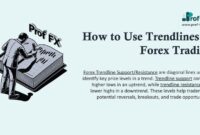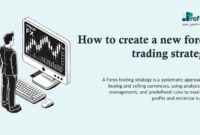Government interventions and currency manipulation are situations in which a government, typically through its central bank, takes specific action in the Forex market to increase or decrease the value of it’s currency. That’s specific action can come in one or two forms: outright intervention or verbal intervention.
Outright intervention occurs when a government actually goes out and manipulates the value of its currency by either buying or selling that currency on the open market. Verbal intervention occurs when a government threatens to manipulate the value of its currency via open-market transactions, but doesn’t actually pull the trigger.
Naturally, a government has a much greater likelihood of manipulating the value of its currency if it is actually engaged in buying or selling that currency, but sometimes the mere threat of intervention is enough to achieve the government’s desired results without its having to put to put a lot of money on the line.
Here’s another wrinkle. Both outright and verbal intervention can come in two forms: coordinated intervention and unilateral intervention.
Coordinated intervention occurs when more than one government body gets together and decides to intervene in the markets, either through outright intervention or through verbal intervention. Unilateral intervention occurs when a government decides to act on its own and takes matters into its own hands when trying to manipulate the value of its currency.
As you will see, coordinated intervention is much more effective in the long run than unilateral intervention. Sure, unilateral intervention can have a huge impact on the market in the short run, but its effects tend not to last as long.
So why would a government want to intervene in the currency market? Governments intervene because they are:
- Worried that the currency is getting too strong
- Worried that the currency is getting too weak
- Pegging the currency to another currency
Worried That the Currency Is Getting Too Strong
Why would a government worry that its currency was getting too strong? Having a strong currency is usually a sign that your economy is doing well and that your currency is in high demand, right?
Well, it seems that governments don’t mind having a strong currency until it starts to interfere with the country’s exports. If a country can’t export its goods and services, jobs start drying up, the public stark to blame the government, and the government decides to take action so that all of the politicians who are in office can slay there.
Let us illustrate the concept by walking you through the basics of the Plaza Accord, another Forex agreement that was named after the venue where the agreement was signed.
Plaza Accord
In the mid-1980s, the U.S. dollar was flying high. Foreign investors were flooding the U.S. markets with capital to take advantage of the ridiculously high interest rates that were available thanks to the actions that Paul Volcker (then chairman of the Federal Reserve) had taken to combat the rampant inflation that had crippled the U.S. economy in the late 1970s and early 1980s. Imagine being able to buy U.S. Treasuries that were yielding more than 20 percent. You would be snapping those up as fast as you could.
Unfortunately, this influx of investment demand was driving the value of the U.S. dollar higher, even though the country had a trade deficit and a weak economy. This caused a negative feedback loop in the United States. The U.S. dollar continued to get stronger, which meant that it was more expensive for foreign consumers to buy U.S. goods and services, which in turn made it harder and harder for the United States to climb out of its recent recession.
Luckily for the U.S. government, it was able to bring the finance ministers and others from the United Kingdom, West Germany, France, and Japan together at the Plaza Hotel in New York City and convince them that they all needed to take coordinated action to devalue the U.S. dollar. On September 22, 1985, these men signed the Plaza Accord and instructed their respective trading desks to start selling U.S. dollars. This sudden influx of U.S. dollars into the market immediately started to drive the value of the U.S. dollar lower, enabling the United States to reduce its trade deficit.
Recent Intervention
If you’re interested in a more recent example of a country that intervened in the currency market because it felt that its currency was becoming overvalued, you don’t have to look any further than Japan on September 15, 2010. On this date in history, the Japanese Ministry of Finance (MOF), via the Bank of Japan (BOJ), injected V2.12 trillion into the market’ in an attempt to stop the rise in value of the Japanese yen.
You see, Japan’s economy is heavily dependent on exports, and as the Japanese yen got stronger and stronger, it was becoming harder and harder for companies like Toyota and Sony to export their products and compete in the United States and other major global markets. By intervening, the Japanese government hoped that it could keep prices low enough to allow its exporters to remain competitive.
The value of the Japanese yen did stabilize during the months following the intervention, but that can’t all be attributed to the actions taken by the Japanese government. The rebounding global economy and the resurgence of the U.S. dollar have a lot to do with the Japanese yen getting a little weaker. Also, the Japanese government intervened unilaterally. And as we’ll see in just a moment, unilateral moves seem to be far less effective than coordinated interventions.






